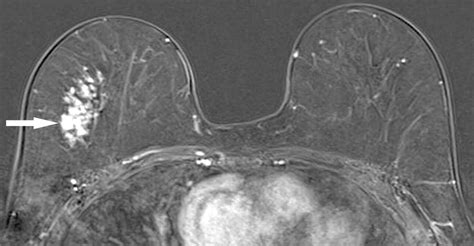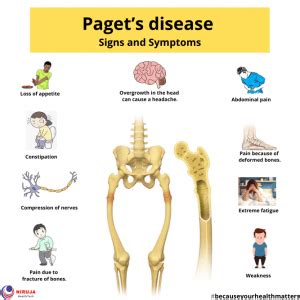Intro
Learn about Paget Disease Of The Breast, a rare breast cancer type, characterized by nipple-areola complex symptoms, often linked to ductal carcinoma in situ, requiring prompt diagnosis and treatment to prevent invasive breast cancer progression.
Paget's disease of the breast is a rare and often misunderstood condition that affects the skin of the nipple and, sometimes, the areola. It is essential to understand the importance of this topic, as early detection and proper treatment can significantly improve outcomes for those affected. Paget's disease is frequently associated with underlying breast cancer, making it crucial to recognize the signs and symptoms to ensure timely medical intervention. In this article, we will delve into the world of Paget's disease, exploring its causes, symptoms, diagnosis, treatment options, and more, to provide a comprehensive understanding of this complex condition.
The significance of Paget's disease lies in its potential to indicate the presence of an underlying breast cancer. Studies have shown that the vast majority of patients with Paget's disease of the breast have either ductal carcinoma in situ (DCIS) or invasive breast cancer. Therefore, it is vital to approach this condition with a thorough understanding of its implications and to seek medical attention promptly if symptoms arise. By doing so, individuals can ensure the best possible outcomes and improve their chances of successful treatment.
As we explore the topic of Paget's disease, it becomes clear that awareness and education are key to combating this condition. By understanding the risk factors, recognizing the signs and symptoms, and being aware of the diagnostic and treatment options available, individuals can take an active role in their health and well-being. In the following sections, we will delve deeper into the specifics of Paget's disease, providing a detailed examination of its causes, symptoms, diagnosis, treatment, and more, to empower readers with the knowledge they need to make informed decisions about their health.
Paget's Disease Of The Breast Overview

Causes And Risk Factors
The exact causes of Paget's disease are not fully understood, but several risk factors have been identified. These include: * Family history of breast cancer * Previous radiation therapy to the breast * Presence of BRCA1 or BRCA2 gene mutations * History of breast biopsies or other breast procedures * Age, with most cases occurring in women over 50 Understanding these risk factors can help individuals take proactive steps to reduce their risk and stay informed about their health.Symptoms Of Paget's Disease

Diagnosis And Staging
Diagnosing Paget's disease typically involves a combination of physical examination, imaging tests, and biopsy. The diagnostic process may include: * Mammography or ultrasound to evaluate the breast tissue * Biopsy to examine the cells of the nipple and areola * MRI or other imaging tests to assess the extent of the disease * Sentinel lymph node biopsy to determine if the cancer has spread to the lymph nodes Accurate diagnosis and staging are critical to determining the best course of treatment and ensuring the best possible outcomes.Treatment Options For Paget's Disease

Living With Paget's Disease
Receiving a diagnosis of Paget's disease can be challenging and overwhelming. However, with the right support and resources, individuals can navigate this journey and focus on their health and well-being. Some tips for living with Paget's disease include: * Staying informed and educated about the condition * Building a strong support network of family, friends, and healthcare professionals * Focusing on overall health and wellness, including diet, exercise, and stress management * Participating in clinical trials or research studies to advance the understanding and treatment of Paget's disease By taking an active role in their health and well-being, individuals with Paget's disease can improve their quality of life and ensure the best possible outcomes.Prevention And Early Detection

Current Research And Advances
Researchers are continually working to improve the understanding and treatment of Paget's disease. Some current areas of research include: * Investigating the molecular mechanisms underlying Paget's disease * Developing new and more effective treatments, including targeted therapies and immunotherapies * Improving diagnostic techniques, including imaging tests and biomarkers * Exploring the role of genetics and genetic testing in Paget's disease By staying up-to-date on the latest research and advances, individuals can stay informed and empowered to make the best decisions about their health.What are the symptoms of Paget's disease of the breast?
+The symptoms of Paget's disease of the breast include itching, redness, or inflammation of the nipple and areola, flaking or crusty skin on the nipple, discharge or bleeding from the nipple, a lump or mass in the breast, and changes in the shape or size of the nipple.
How is Paget's disease diagnosed?
+Paget's disease is typically diagnosed through a combination of physical examination, imaging tests, and biopsy. The diagnostic process may include mammography, ultrasound, MRI, and sentinel lymph node biopsy.
What are the treatment options for Paget's disease?
+Treatment for Paget's disease usually involves a combination of surgery, radiation therapy, and medication. The specific treatment plan will depend on the extent of the disease, the presence of underlying breast cancer, and other individual factors.
As we conclude our exploration of Paget's disease of the breast, we hope that readers have gained a deeper understanding of this complex condition. By staying informed and empowered, individuals can take an active role in their health and well-being, improving their chances of early detection and successful treatment. We invite readers to share their thoughts and experiences, and to join the conversation about Paget's disease and breast health. Together, we can work towards a future where everyone has access to the knowledge, resources, and support they need to thrive.
